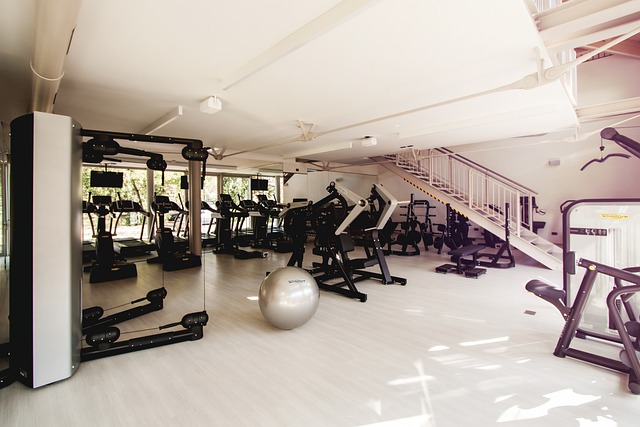Mindfulness, a practice focused on present-moment awareness and non-judgmental acceptance of feelings, effectively combats anxiety. Techniques like breathing exercises and mindful meditation help break worry cycles, reduce tension, and promote inner peace. Regular mindfulness practice throughout the day strengthens mental resilience, improves emotional balance, enhances overall well-being, and provides lasting relief from anxiety. Incorporating brief moments of awareness during daily routines can lead to significant long-term stress reduction.
“Unwind and find inner peace with our comprehensive guide to mindfulness techniques, specifically tailored to combat anxiety. Discover powerful tools like breathing exercises and mindful meditation to calm your mind and reduce tension effectively. We’ll walk you through each step, from understanding mindfulness’s role in anxiety management to incorporating it into your daily routine for long-lasting relief. Let’s embark on this journey towards a more serene you.”
- Understanding Mindfulness and Its Role in Anxiety Management
- Breathing Techniques for Calm and Relaxation
- Mindful Meditation: A Step-by-Step Guide
- Incorporating Mindfulness into Daily Routines for Long-Term Relief
Understanding Mindfulness and Its Role in Anxiety Management

Mindfulness, at its core, is the act of focusing one’s awareness on the present moment while calmly acknowledging and accepting feelings, thoughts, and bodily sensations. It’s a powerful tool that helps to cultivate a sense of calm and resilience against life’s stresses, including anxiety.
In the context of mindfulness for anxiety, this practice involves observing anxious thoughts without judgment and gently guiding your focus back to the breath or other sensory experiences in the here and now. Regular mindfulness practice can help individuals to break free from repetitive cycles of worry and tension, fostering a deeper sense of inner peace and emotional balance. By learning to manage anxiety through mindfulness, folks can enhance their overall well-being and quality of life.
Breathing Techniques for Calm and Relaxation

Breathing is a powerful tool for cultivating calm and managing tension, making it an essential aspect of mindfulness practices for anxiety relief. Simple breathing techniques can help to slow down racing thoughts and create a sense of tranquility. One effective method is diaphragmatic breathing, also known as belly breathing. This involves taking slow, deep breaths, allowing your diaphragm to expand and contract naturally. By focusing on the sensation of air filling your abdomen, you can activate your parasympathetic nervous system, promoting relaxation and reducing stress.
Regular practice of mindful breathing exercises throughout the day can help to train your mind to stay present and calm under pressure. Whether it’s a few minutes during work breaks or a dedicated meditation session, incorporating conscious breathing has been shown to lower anxiety levels and improve overall mental well-being.
Mindful Meditation: A Step-by-Step Guide

Mindful meditation is a powerful tool to combat mindfulness for anxiety and promote mental calmness. To begin, find a quiet space where you won’t be disturbed. Set a timer for 5-10 minutes, or as long as feels comfortable. Focus on your breath, noticing the sensation of air flowing in and out. When thoughts arise, gently acknowledge them without judgment and bring your attention back to your breath.
As you meditate, strive to observe your mind’s restlessness without getting caught up in it. Let thoughts come and go like clouds passing in the sky. With consistent practice, you’ll develop a deeper sense of awareness and learn to cultivate a tranquil mindset, even amidst challenging situations.
Incorporating Mindfulness into Daily Routines for Long-Term Relief

Incorporating mindfulness into daily routines can significantly reduce long-term tension and offer lasting relief from anxiety. The key lies in making it a consistent practice rather than a sporadic one. By dedicating just a few minutes each day to mindfulness exercises, such as deep breathing or meditation, individuals can train their minds to stay grounded in the present moment. This simple yet powerful approach helps to break the cycle of anxious thoughts and creates a sense of inner peace.
For those new to mindfulness, starting small is essential. Incorporate brief mindfulness breaks during mundane tasks like commuting or eating. Over time, as these moments of awareness become more natural, expand the practice to include longer periods of quiet reflection or guided meditation. Consistency is key; just as regular exercise strengthens the body, consistent mindfulness practice strengthens mental resilience, enabling individuals to better manage stress and anxiety in their daily lives.
Mindfulness techniques have proven to be powerful tools in managing anxiety and reducing mental tension. By understanding the concept of mindfulness and its role in calming the mind, individuals can employ breathing exercises, mindful meditation practices, and seamless integration into daily routines to achieve long-term relief from anxiety. These simple yet effective strategies offer a natural and holistic approach to well-being, empowering folks to navigate their emotions with greater ease and tranquility.
